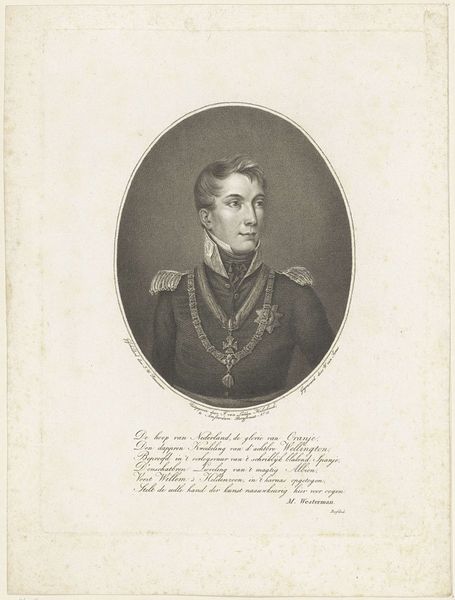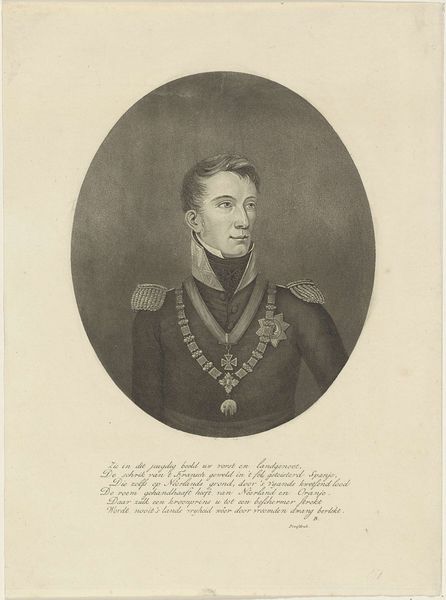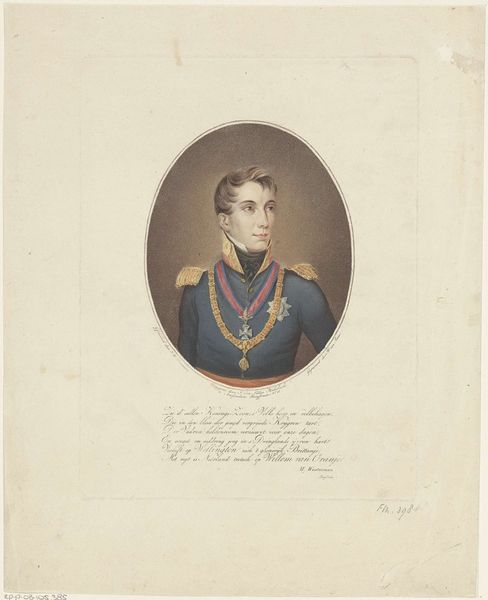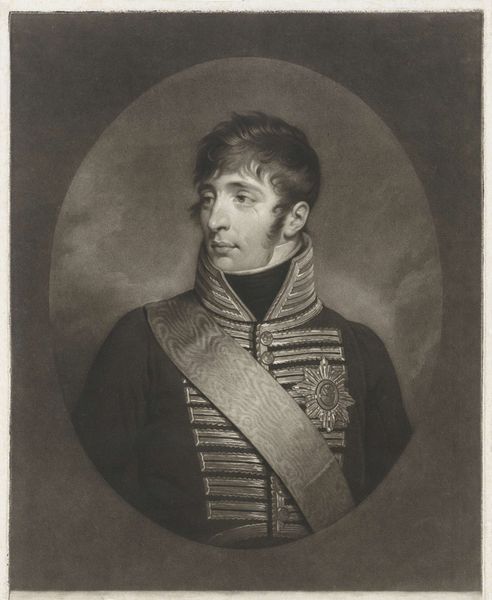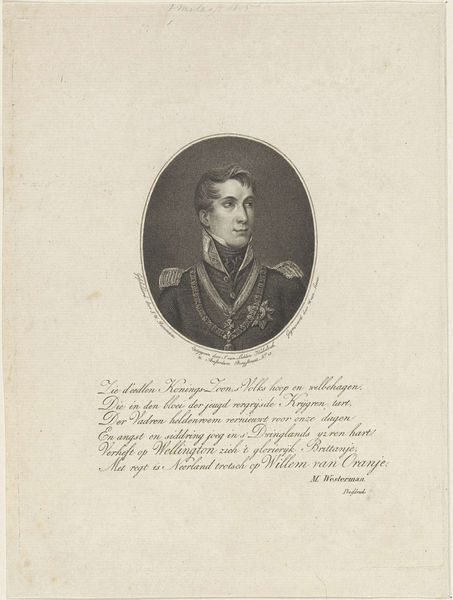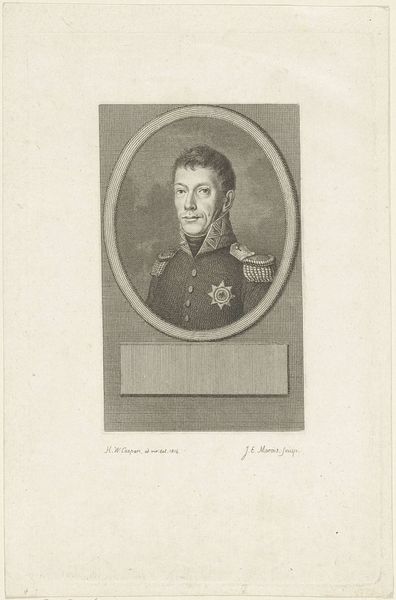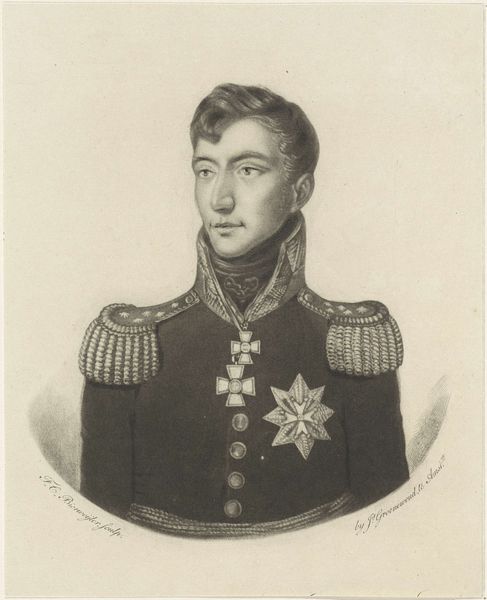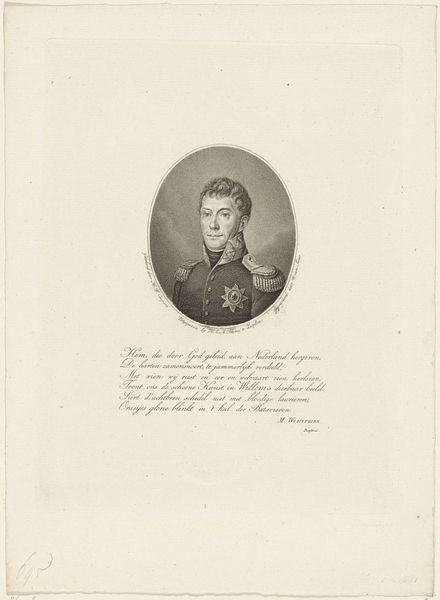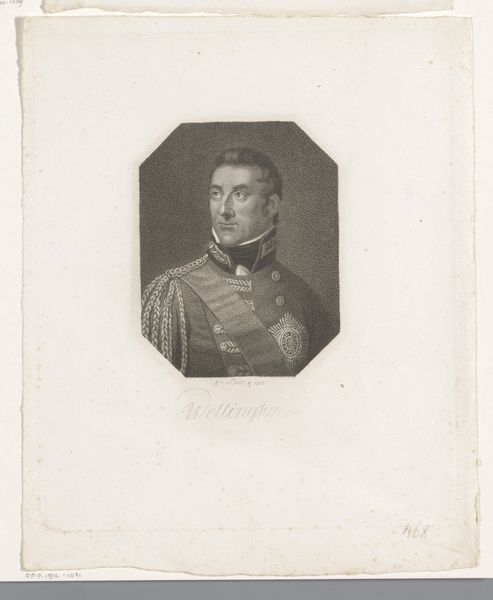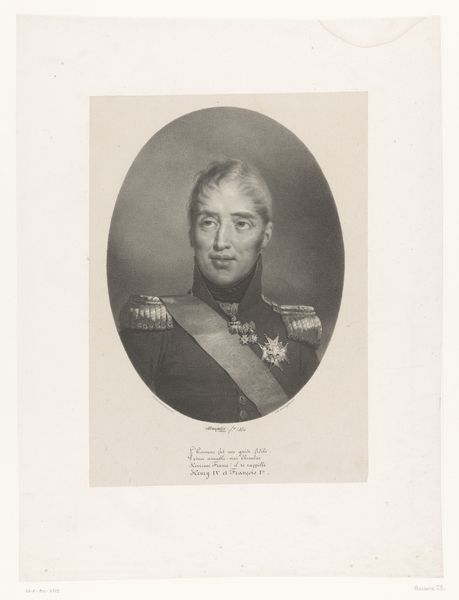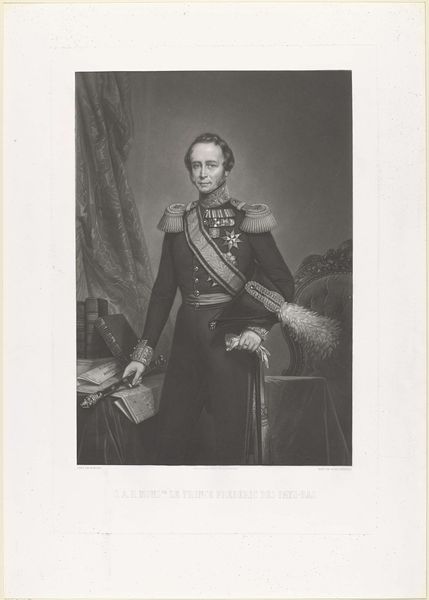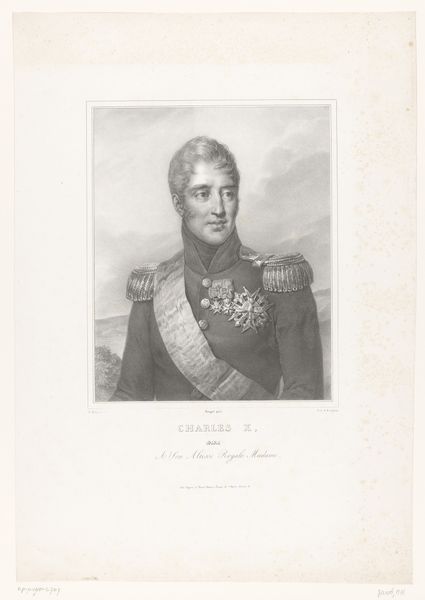
print, engraving
#
portrait
# print
#
old engraving style
#
historical photography
#
history-painting
#
academic-art
#
engraving
#
realism
Dimensions: height 170 mm, width 132 mm
Copyright: Rijks Museum: Open Domain
Curator: Welcome! Here we have an engraving titled "Portret van Willem II, koning der Nederlanden," placing it sometime between 1810 and 1899. Editor: My immediate reaction is a feeling of subdued authority, a sense of controlled power emanating from the subject’s gaze. The detail in the rendering of his uniform and medals suggests a very rigid social structure, wouldn't you agree? Curator: Absolutely. These academic portraits were crucial in shaping national identity. This depiction of Willem II speaks volumes about the role of monarchy in 19th-century Europe, reflecting an era grappling with both revolution and consolidation of power. Think about the political context. He inherited a nation shaped by Napoleonic wars. Editor: Exactly. It’s all about the making, the process. Engravings like these democratized imagery. Prints meant accessible visual representations that reinforced this constructed image of royalty throughout different societal strata. Note the meticulous, almost painstaking effort put into translating the likeness, and therefore the idea of the king, into this medium. Curator: And we should think critically about that distribution. Consider who had access, and who was represented positively. Power is never truly democratized when its image is meticulously crafted for specific eyes. Whose stories are marginalized or completely erased in favour of this carefully constructed narrative? The image reinforces specific gender and power roles, for instance. Editor: True, but it's hard to ignore the craft itself. Look at the gradations of tone, the precise lines building up the form, even considering the ink, the paper, the labor involved in creating this reproducible image all hold significance. It speaks to the economics and technical processes of the period. Curator: And the cultural processes! The act of portrayal itself can tell a complex story. Analyzing who gets immortalized in art is crucial to understanding society’s values and imbalances at the time. We should question the notion of celebrating a powerful, undoubtedly flawed man. Editor: I see your point. Maybe our contrasting perspectives highlight the multifaceted ways we can look at the artwork – from tangible creation, to a cultural commentary of an era. Curator: Precisely, finding intersections of both allows a fuller appreciation of this portrait and the era it reflects.
Comments
No comments
Be the first to comment and join the conversation on the ultimate creative platform.
